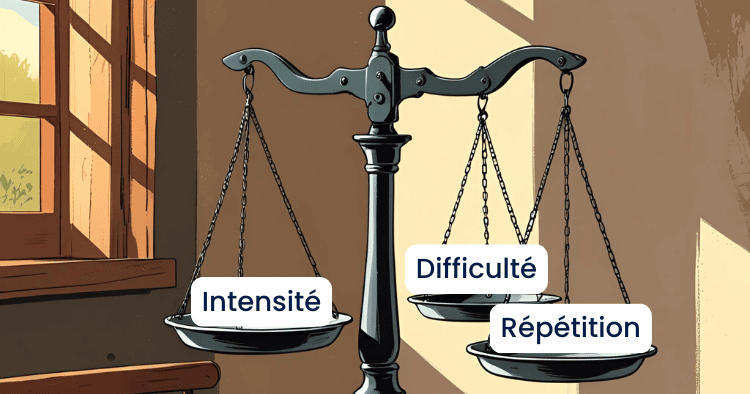
In neurological rehabilitation, two pillars guide our daily interventions: repetition and intensity. These are what determine the effectiveness of motor learning and, consequently, functional recovery.
But beware of a common trap: confusing intensity with difficulty.
An exercise that is too difficult is not always more effective.
On the contrary, it can quickly become counterproductive:
Most of the time (70%), the patient must successfully complete the exercise correctly.
Conversely, a simpler, better-targeted exercise can be repeated more and reach a level of intensity that is far more beneficial in the long term.
It is the quality and quantity of movement that shape recovery, not the complexity of the challenge.
Let’s take a classic case: a post-stroke patient who wants to walk “without assistance”.
It’s an understandable goal, but this premature autonomy can become a hindrance to recovery.
Without technical assistance:
With a well-chosen mobility aid:
And it is this controlled intensity that generates the desired neuroplasticity.
A fundamental principle in neurological rehabilitation:
The brain learns everything, even “poor” strategies.
That’s why it’s crucial to build the right motor patterns from the first sessions.
The right balance to find is as follows:
Walking aids play a central role in this equation.
They allow for fine-tuning the level of difficulty while maintaining the intensity of the work.
The Wheeleo® is a unique walking aid, designed as an intermediate step between the rollator and the cane.
In summary: it allows for reducing difficulty without sacrificing intensity, while maximizing repetitions under correct conditions. And this profoundly changes the impact of rehabilitation.
Effective rehabilitation does not seek to complicate things.
It seeks to repeat better, longer, more intensely, in realistic and secure conditions.
And if we want to build strong automatisms, we must offer the brain quality, quantity, and consistency.
Repeat, intensify… without unnecessarily complicating things.
Are you a physiotherapist or occupational therapist and want to test the Wheeleo®?
Please fill in this short form so that we can contact you to arrange a test.